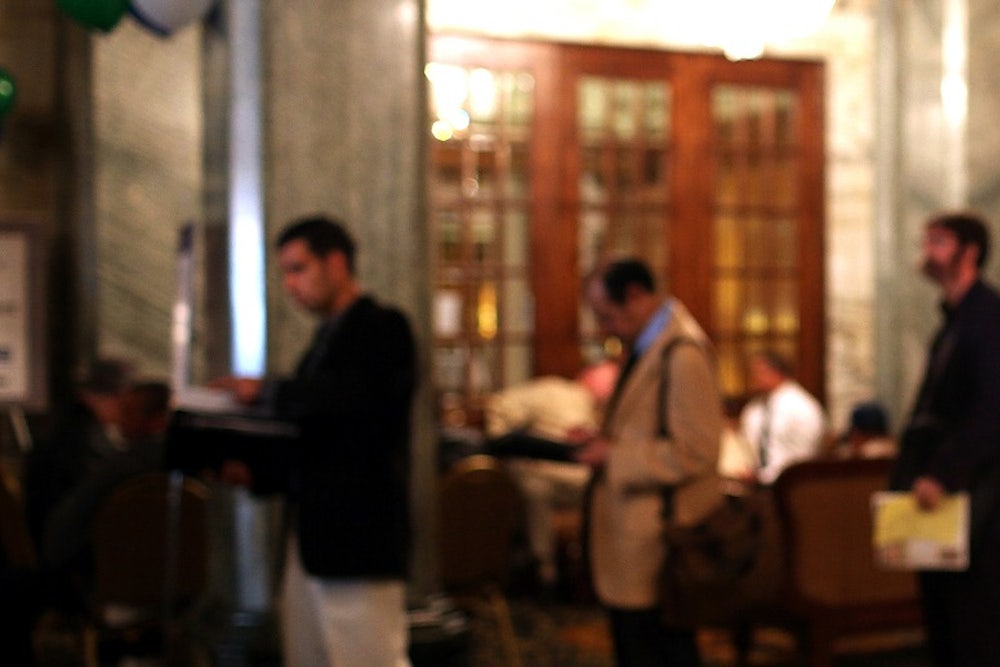The economy keeps on improving but workers still aren’t feeling it. That’s the message from the October jobs report, which the Commerce Department released Friday morning. The economy added 214,000 jobs last month, slightly missing expectations of 235,000. The unemployment rate fell to 5.8 percent from 5.9 percent.
As always, it’s better to look at the economy using a three-month moving average, as month-to-month jobs reports can be noisy. When looked at that way, you can see that the economy has taken a step forward since April.

August and September’s job numbers were revised up to 23,000 and 8,000 respectively. That’s good news. But job growth is only part of the story. Wage growth also matters and on that front, workers continue to come up short. Wages grew just 0.1 percent last month and have risen just 2 percent over the past year. That’s barely keeping up with inflation. If you’re wondering why so many Americans listed the economy as the most important issue facing the country in Tuesday’s elections, you don’t have to look much further than that. Median household income is still below its 2008 levels.
Other news in Friday’s report was positive. Long-term unemployment continued its slow decline, falling by 38,000 and a broader measure of the unemployment rate, the U-6 measure, fell from 11.8 percent to 11.5 percent. An even better sign: The labor force participation rate (LFPR) ticked up to 62.8 from 62.7 percent. This is an under-reported development in the labor market over the past six months: the labor force participation rate has stopped declining. Since the Great Recession, the LFPR has been consistently falling. Part of this was expected as the U.S. population aged and baby boomers retired. But much of it was also the result of Americans dropping out of the labor force in the face of the weak economy. Economists hoped that those discouraged workers would rejoin the labor force as the economy recovered but even as the recovery continued in 2011 and 2012, that didn’t happen. Is it happening now? That’s hard to say. The labor force grew by 416,000 in October, which is a big reason that that the LFPR has stabilized over the past year. But it could start falling again soon—and that wouldn’t be good.
Despite that good news, it’s hard not to look at wage growth and feel dismayed. The economy continues to add jobs at a decent pace but the tightening labor market is not putting upward pressure on wages. Meanwhile, policymakers are starting to tighten policy. In October, for instance, the Federal Reserve ended its quantitative easing program. The good news is that the Fed is not going to raise interest rates anytime soon—economist are currently forecasting the first rate hike sometime next summer. But inflation hawks have been pushing for an earlier timetable for raising rates. Fed Chair Janet Yellen has shown a terrific job resisting those calls so far and must continue to do so until wages actually rise.
This post has been updated.
